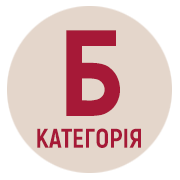RENDRING OF THE PHRASEOLOGICAL UNITS AS MEANS OF CHARACTER DESCRIPTION IN UKRAINIAN AND POLISH TRANSLATIONS OF “ALICE THROUGH THE LOOKING GLASS” BY LEWIS CARROLL
DOI:
https://doi.org/10.32782/2410-0927-2020-12-10Keywords:
phraseologism, translation, character, character formationAbstract
The article deals with the peculiarities of the reproduction of phraseological units as means of character formation in the translations of the novel “Alice Through the Looking Glass” into Ukrainian and Polish. The classification of phraseological units in terms of translation studies is presented. The methods of translation of phraseological units are defined (translation by phraseological equivalent, phraseological analogue, descriptive translation, contextual substitutions and calculations, use of appropriate phraseologism in the target language). The classification of phraseological units by their semantics (common phrases (units where the freedom of choice is limited); phraseological groups (express one but complex concept); phraseological unities (one indivisible unit) is analyzed. It is defined that phraseological fusion is a semantically indivisible phraseological unit and its meaning is never influenced by the meanings of its components; phraseological unity is a semantically indivisible phraseological unit the whole meaning of which is motivated by the meanings of its components; phraseological combination is a semantically divisible phraseological unit in which every word has absolutely independent meaning while one of the components has a bound meaning. Functional classification of phraseologisms in the novel “Alice Through the Looking Glass” (phraseologisms related to the characteristics of characters (both from the positive and the negative side); phraseological units rendering the character’s inner state; phraseological units that help to reveal the character’s physical state; phraseologisms characterizing the rich spiritual world of a character, his or her wisdom and wittiness) is given. Phraseologisms that relate to the characteristics of the characters and perform the evaluative function are thematically divided into the following groups: phrases that help to reveal the positive qualities of the characters; phrases that contribute to the disclosure of negative qualities; phrases that complement the portrait characteristics. Ways of translating of the phraseological units into Ukrainian and Polish are investigated. The analysis of 150 phraseological units led to the conclusion that there are several ways to translate a phraseological unit depending on which group it belongs to. There are such ways of translating phraseological units – translation of the phraseological equivalent, phraseological analogue, descriptive translation, contextual replacements, and loan translation.
References
Arnold, Iryna . 1986. Leksykolohiya suchasnoyi anhliyskoyi movy. Moskwa.
Bally, Charles. 1974. Course in General Linguistics. McGraw-Hill Book Company: New York; Toronto; London.
Bezpoyasko, Olena. 1987. Morfemika ukrayinskoyi movy. Kyiv.
Carroll, Lewis. 2016. Alisa v Zadzerkalli. Kyiv: A-BA-BA-GA-LA-MA-GA.
Carroll, Lewis. 2005. Po drugiej stronie Lustra. Poznań: Media Rodzia.
Carroll, Lewis. 1995. Through the Looking Glass (And What Alice Found There). London: Harper Collins.
Vynogradov, Viktor. 1977. Izbrannye trudy: Leksykologiya i leksykografiya. Moskwa: Nauka.
Zapysky «Perekladatskoyi maisterni 2000–2001». 2001. T. 1. Lviv. nats. un-t im. Ivana Franka. Lviv.







